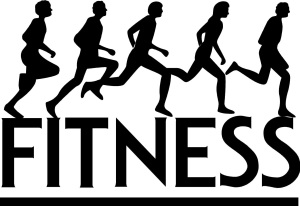PCOS and Fertility
May 4, 2015
Polycystic Ovarian Syndrome, or PCOS is a very common endocrine disorder in which a woman’s sex hormones, oestrogen and progesterone, are out of balance. This leads to the growth of multiple cysts on a larger than average size ovary. The cysts are not harmful and the exact cause is unknown but there is a strong genetic component meaning that women are more likely to develop PCOS if there is a family history of the disorder.
Polycystic Ovaries OR Polycystic Ovarian Syndrome
Some women are only mildly polycystic and the only symptom they may experience is a slightly irregular or longer menstrual cycle. These women generally don’t have a problem getting pregnant but it may take them a little longer than usual. Other women may be experiencing a range of symptoms including; obesity, insulin resistance, irregular periods, acne, excess body hair, mood swings, depression and of course problems getting pregnant. This is the difference between a woman with polycystic ovaries, and a woman experiencing a whole host of symptoms with polycystic ovarian syndrome.
Infertility
PCOS is the most common cause of infertility as some women can go for months without having a period. Long cycles are often followed by very heavy bleeding or for some women there may be scanty bleeding and anovulation, or amenorrhea. The hormonal imbalance means that less oestrogen is produced but there is an increase in other hormones like LH [luteinizing hormone] and testosterone. This has a knock on effect on the quality of the developing follicles and on the quality of the endometrium also.
Western medical treatment
This usually involves the oral contraceptive pill if the woman is not trying to get pregnant. Women who do wish to get pregnant are often given metformin, which increases ovulation frequency. Other drugs prescribed for fertility are clomiphene, hCG, and gonadotropin. IVF or other ART are recommended if these drugs fail. The problem with drug treatment, apart from the side effects, is that it does not address the root cause of the condition, which is the ovary’s endocrine imbalance and the quality of the eggs being produced.
Traditional Chinese Medicine [TCM]
TCM and Naturopathic medicine have a different approach to treating PCOS. It is a disorder that responds best to an individualised treatment plan. After a detailed consultation, your TCM practitioner will differentiate your pattern of imbalance and the root cause of your PCOS will be treated with acupuncture and dietary advice. If periods have been absent or irregular the practitioner will focus on restoring regular periods and regulating ovulation. Acupuncture can stimulate the organs, improve blood flow, normalize hormone levels and promote the proper functioning of the reproductive system.
Diet
What you eat is also very important for the PCOS client and especially if you are overweight. Fat cells store oestrogen so your practitioner may advise dietary changes in order to increase liver function as it is responsible for metabolizing excess circulating hormones.
Hope
Many women understandably feel a sense of frustration and hopelessness about getting pregnant and wonder whether it will ever happen for them. But don’t despair, the body can heal and rebalance, and you can get pregnant. Most women are hugely encouraged after a couple of months of acupuncture when they see their cycle length shorten and their ovulation come earlier and earlier until they ovulate nomally on day 14. As one client said to me recently that she now had 12 chances of getting pregnant per year instead of her previous 5-6.
RESEARCH
A study conducted by Swedish researchers at the University of Gothenburg, found that exercise and electro-acupuncture treatments could reduce some symptoms of PCOS. They were looking for a long-lasting treatment for the condition without adverse side effects. During the 16-week study, nine women with an average age of 30 years underwent 14 acupuncture treatments. The study found that the electro-acupuncture treatments led to more regular menstrual cycles, reduced testosterone levels and reduced waist circumference (there was no drop in BMI or weight). The authors noted that their study had some limitations, including a small sample size.
Swedish study by the Sahlgrenska Academy, University of Gothenburg.
WHERE DO YOU FIT IN?
May 2, 2015
Fitness is one of the largest growing industries today. When choosing which program best fits your life and your desired outcome, it is important to look at these four aspects of a fitness routine:
Endurance
These activities are designed to increase your heart rate and breathing for extended periods. Gradually build up endurance exercises over a period of time, initially starting out with as little as 5 minutes. Examples of endurance exercises include briskly walking, cycling, long-distance running, aerobics, and may even include mopping or scrubbing a floor, and mowing or raking the lawn.
Strength training
Increasing your strength can improve and maintain your mobility, control your weight and sculpt a muscular body. Lifting weights is one of the easiest and fastest ways to build muscle.
Martial arts are another form of strength training exercises.
Flexibility
Increasing your flexibility will help “loosen” you up and allow you to move more freely.
One great way to prevent injury and aid performance is to do stretching exercises before and after endurance and strength training. Yoga and gentle stretching fall within this category.
Balance
More and more, people are seeking balance exercises to reduce stress and harmonize body, mind and spirit. Tai Chi, Qi Gong and certain forms of yoga are exercises designed to maintain balance while cultivating Qi energy that can keep you healthy and strong.
Talk to a qualified professional before you start an exercise routine to best determine what exercises will be most effective in helping you reach your desired outcome of a healthy, balanced body.
Consider acupuncture for:
Performance enhancement; identifying the underlying conditions that may predispose an individual to injuries; and for treating sport-related injuries effectively. Remember, acupuncture can be introduced at any phase of a treatment regimen for an injury.
It is safe, effective and natural.


